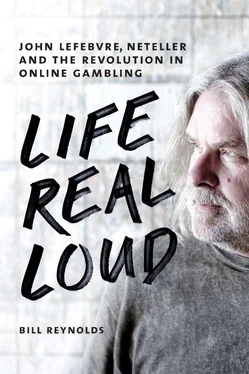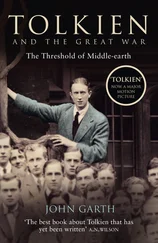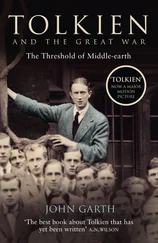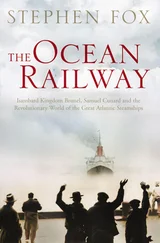Since then, he’s been shopping around. He found stage monitors that exclude outside noise, for instance, so he wouldn’t he inundated with the onstage blare of the other instruments. But really, the situation was worse than no good at all because he knows that while the din of crowded rooms is where most people prefer to experience their rock music, the truth is, “noisy rooms aren’t fun anymore.” So he has cheered himself by finding a guy in Seattle to engineer better remixes of three-quarters of his existing recorded material. This must be a gratifying consolation, as he was never truly satisfied with previous incarnations.
The contractors completed installation of the flooring just today, so we’re under strict orders: stocking feet only inside the house. Lefebvre pulls a bottle of Caymus Vineyards’ cab sauv and two glasses from the man purse. He sings a few lines from his tune “Out of Here” a cappella: “You take the best / I’ll take the rest / I’m out of here / So gone out of here.”
Out of the USA and back home. Night falls early and fast in front of us on this late February afternoon. Across the strait is a paper mill in Crofton (population 2,500), forty-five miles north of Victoria, BC. It opened in 1957 and is still operating, its current owner being Catalyst Paper of Richmond, BC. Lefebvre recalls being told by the Salt Spring real estate agent that the mill would be closing soon. That was nearly a decade ago, yet the pulp smokestacks continue to discharge their plumes of smoke above Vancouver Island.
Lefebvre says he was under a misapprehension. He’d asked his realtor how many people worked at the mill and the woman told him, “Oh, about eight.” The correct answer was closer to six hundred. Then, sometime after he purchased the property, the mill laid off a huge number of workers. He was left with the cynical impression that the only reason it was not being shut down for good was that company executives had rationalized it was cheaper to continue to run it with a skeletal crew than it would be to clean up the site after it went dark.
As the mill’s lights take over the sky, the spaceship-like image isn’t at all bad — industry and nature side by side in their usual phantasmagoric disharmony — although there is the noise to contend with when enjoying the outdoors. A ferry runs from Vesuvius Bay, just a couple of miles from here. That’s also where the pub is located, the one Lefebvre bought and was going to fix up. He spent a bunch of cash testing the foundations and the rock the pub sat on, and then consulted a couple of business buddies. They told him, sure, you can put in a couple of million and fix it so your neighbors have a watering hole and you have a place to strum and sing, but you’ll never, ever sell enough beer to get your investment back. In the gusher days, this would not have been an issue.
The Vesuvius Bay ferry chugs across to Crofton. Southwest of there is Duncan (population 5,000), which is located on the Trans-Canada Highway, thirty miles north of Victoria and thirty miles south of Nanaimo. North of Crofton is Chemainus (population 3,000), then it’s Ladysmith (population 7,000).
Lefebvre recalls, “When I was in living in Malibu, one of my most beautiful neighbors down the beach was Pamela Anderson. We had a couple of things in common: we both lived in Malibu and I could see her hometown, Ladysmith, from here. They smith ’em real good.”
The new house, designed by Lefebvre himself, is made of heavy salvaged timber. It may not be to everyone’s taste, since with its complex roof structure of two principal rafters, collar ties, perpendicular ridge beam, and purlins, it could double as a church. There are quirks. For instance, the huge living space is laid out so it can convert into a recording studio in no time and at the north end, up a few steps, is Lefebvre’s doorless bedroom. Inside the room is a bathroom, again sans door. Maybe not everyone’s idea of cozy, but for the shy among us, there is a private conventional space for constitutionals, passing water, and performing ablutions available in the basement.
The slab that sits on top of the cooking island, in what would be called the kitchen if it were separated with walls, is gouged, pitted, pock-marked, and streaked. It is not burnished into a smooth working surface, so imagine an Edward Burtynsky photograph of open pit mines, miniaturized and in three dimensions. This bold aesthetic decision may require Nathalie Carles to break out the bleach regularly to eliminate food particles.
Inside this impressive sanctuary, Lefebvre tells me, he still has his box of books from jail, and included in that box are a bunch of thoughts he scribbled down during his incarceration. It would be terrific to get hold of these notes, but right now is way too soon to ask for them. “I’ll have a look at them,” he says, “when it’s time to write some new songs.” With some prompting, he reluctantly agrees to go back in time, just once more, to sentencing day, October 25.
It was a surprise when Castel told Lefebvre he was a good man who would continue to do good things. The judge did not give this kind of encouragement to the other Neteller cofounder, which means he may have noted the show of support from family and friends in court, along with Lefebvre’s thick record of giving. He hadn’t become a philanthropist the day after his arrest, and Castel understood that.
There are the few minutes I remember, before the marshals took their man downstairs. From a distance, I can see Lefebvre beginning to remove his tie. He seems fine. He’s even smiling. Marella, Gluck, and Abernethy are with him. Now he tells me what happened:
“I was taking off the Armani suit that was two sizes too small for me since I started eating pizza and drinking wine. They made me take off my tie and they made me take off my shoelaces in case I was going to hang myself. I said, ‘Are you guys serious? I can figure out way to hang myself with my shirt. So what are you going to do, take my shirt?’”
Still I can see Hilary Watson and her beau hug. She is noticeably distraught, while Lefebvre is not. He’s been through this drill. Emily stands off to the side with her husband, waiting her turn to say goodbye, and then her dad is taken away.
Outside, we mill around, unsure of what to do next. Hoggan chats with the lawyers, talking procedure. They tell him what’s involved in visiting, how to get books in, the post-sentence deportation procedure, and working the bureaucracy to get a fast-track document for whenever Lefebvre wants to come back to the U.S., as a convicted felon, to play gigs.
“Are you going to be all right?” I ask Emily.
“Yes,” she replies. “I’ll be fine.”
If she is distraught, she conceals it well. She won’t betray her emotions to the writer, yet I suspect her stomach is not churning. Emily’s eyes normally display the dance of a powerful, playful intelligence. Looking straight at her, I convince myself I see a steely inner core: that’s that, let’s get on with it, the five-year nightmare will soon be over and Dad can come home. And that would be the exact correct demeanor — look forward, it’s almost over — because once Lefebvre is home, his one-year probation will flash by and then he’ll truly be free of the DOJ for good.
In the elevator down to the first floor and toward the main entrance and past the guards and the baggage and body-screening machines, we discuss, in a feeble but friendly way, the possibility of going for a drink and a snack. This is not a bad idea and what Lefebvre might have wanted, but no one’s gas tank is on anything but empty.
At this point, my wife and I feel like intruders, so we say our goodbyes and leave family and close friends in peace. The end of our story coincides with the curtains opening for the next act of Lefebvre’s protracted ordeal.
Читать дальше












